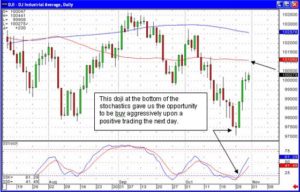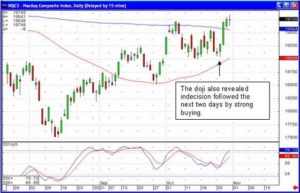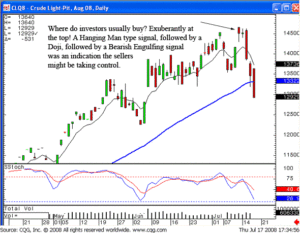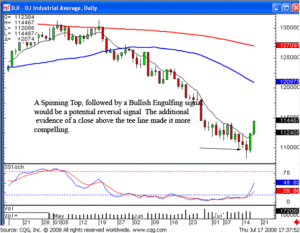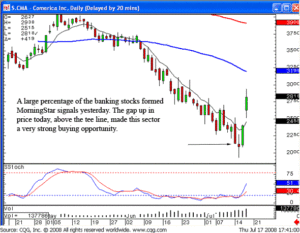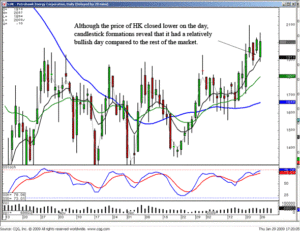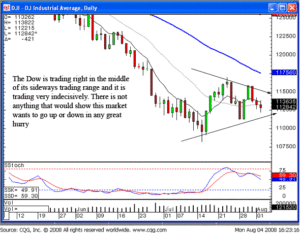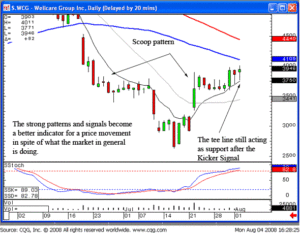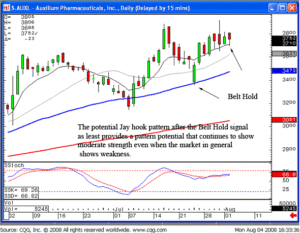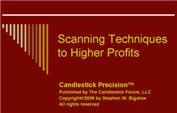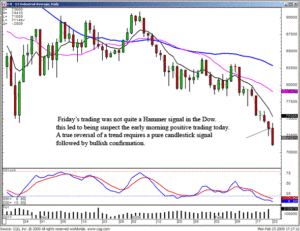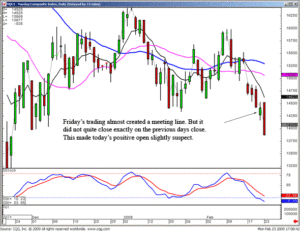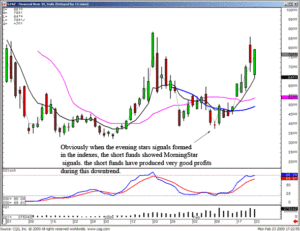Among the energy commodities that prosper with the economic recovery are coal futures. Forty-one percent of the world is electricity and generated by coal and coal heats furnaces in the iron and steel industry. Although China has its own coal reserves India and Brazil with their growing economies do not and will need to import to support their industrial growth. Coal futures are traded on the New York Mercantile Exchange (NYMEX) as well as the Australian Securities Exchange (ASX). China’s Dalian exchange is planning on adding coke futures this year and planning to add coal futures at a later date. In commodities trading traders study both fundamental and technical analysis of a commodity in order to predict futures prices. With coal futures the fundamental commodity analysis has to do with the speed of economic recovery in the population centers and industrial regions of the world. The technical analysis has to do with anticipating the actions of other traders and uses time honored tools such as Candlestick chart analysis. For those interested in trading futures in coal or other commodities, Commodity and Futures Training will provide the basics as well as more advanced insight into commodities markets.
An example of trading coal futures is central Appalachian coal futures. Open outcry trading takes place Monday to Friday from 9 am to 2:30 pm on the trading floor. However, online commodity trading takes place Sunday through Friday via CME Globex and CME ClearPort. Prices are quoted in dollars and cents on contracts of 1,550 tons. Minimum price fluctuations are one cent a ton. Central Appalachian coal trading terminates in the month before delivery and contracts are available for the current year and next four years. As with most commodity trading only producers and buyers who are hedging the market will stay in a contract until the settlement date. The vast majority of traders who buy or sell futures contracts will exit the trade prior to the end of trading. The four year span of available contracts provides commodities traders with a window of opportunity for anticipating price changes and profiting in the coal futures market.
Futures in coal are also available on the NYMEX for Powder River Basin (Wyoming) coal and other exchanges trade other sources. Central Appalachian coal and Power River coal will not necessarily be shipped to Brazil, for example. However, the price of coal in Brazil, India, China, Europe and the USA are interlinked. As with any free market a price variation providing profit opportunity is typically exploited. Thus coal prices around the world will “correct” as demand and supply dictate price in any of a number of markets. Using technical analysis tools such as Candlestick pattern formations trading strategies such as Candlestick trading tactics it is possible to anticipate swings in the price of coal in its various forms and profit in buying and selling futures. In addition it is possible to trade options in futures as well. Buying calls, buying puts, selling calls, and selling puts on futures is also a means of profiting when trading futures in coal.
How do you know when to buy when there is not a current candlestick buy signal? This is one of the dilemmas most investors run into. They see a price moving positive. They want to buy. However, the positive move was not instigated by a candlestick buy signal. The positive trading day was merely a positive trading day. That should cause more diligence if getting into that position. There will be positive moves that start without a candlestick reversal signal. However, if those moves were consistent or substantial, hundreds of years of observations by the Japanese Rice traders would have produced a signal that was to be watched with that type of formation. That does not necessarily mean the price won’t move higher. The probabilities are much greater in uptrend is in progress when it starts with a candlestick buy signal.
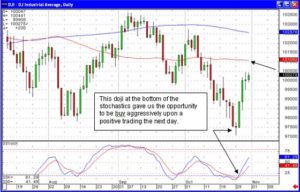
Ford
Note in the Ford Motor Company chart how there was a bullish day but not a bullish signal. Would this have been an important part of the trend analysis? Not if that was the only formation for making a buy decision. Three days prior to the indicated bullish day was a three day kicker derivative signal. That was the cause to be buying. The bullish day was confirming the strong Kicker signal. The visual aspects of candlestick analysis would’ve also shown how the stochastics had bottomed at the Kicker signal and was in an upward direction when the upward bullish day caused a close above the T-line.
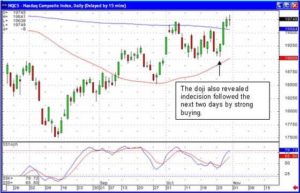
BAC
BAC is another example of how the derivative Kicker signal instigated a new trend. It could be seen bouncing off an obvious trend liine. The purpose of these illustrations is to show there are times that candlestick signals work immediately. There are other times when the signals are formed but it takes a few days for the confirmation of the signals. The purpose of profitable investing is to identify when it is time to be buying. Sometimes that is immediate. Sometimes it requires additional confirmation. However, the benefit candlestick signals provide is the visual accumulation of indicators that represent a buying area.
If you are beginning to understand how candlestick signals work effectively but would like a jumpstart in the learning process, take advantage of the two day training program on July 24 and 25th. When you are presented with the logical aspects of candlestick analysis in an orderly fashion, you will gain insights into investing that you have never had the opportunity to experience. The Japanese Rice traders have merely provided a common sense visual depiction of when the buyers are in control and when the sellers are in control. If you learn this process correctly, you then control your own destiny as far as the rates of return you would like to achieve. This information is applicable to all investing techniques. Forex trading, option trading, stocks, bonds, or commodities can all be traded successfully once you understand the psychology behind each signal in pattern.
Many investors do not learn how to invest correctly when they start investing. These incorrect thought processes remain with most investors throughout their life. Fortunately, the simplicity of candlestick analysis can completely alter an investor’s perceptions and put them in the category of seasoned investors. This is not rocket science. The Japanese Rice traders identified what would make them profitable. Learn how to use this information correctly and you will consistently produce profits in any market. Click here for more training seminar information.
Good Investing,
The Candlestick Forum Team
July 2010 – Training Webinars
Candlestick Technical Analysis Webinar – July 24 & 25
Options Training Webinar – August 21& 22
